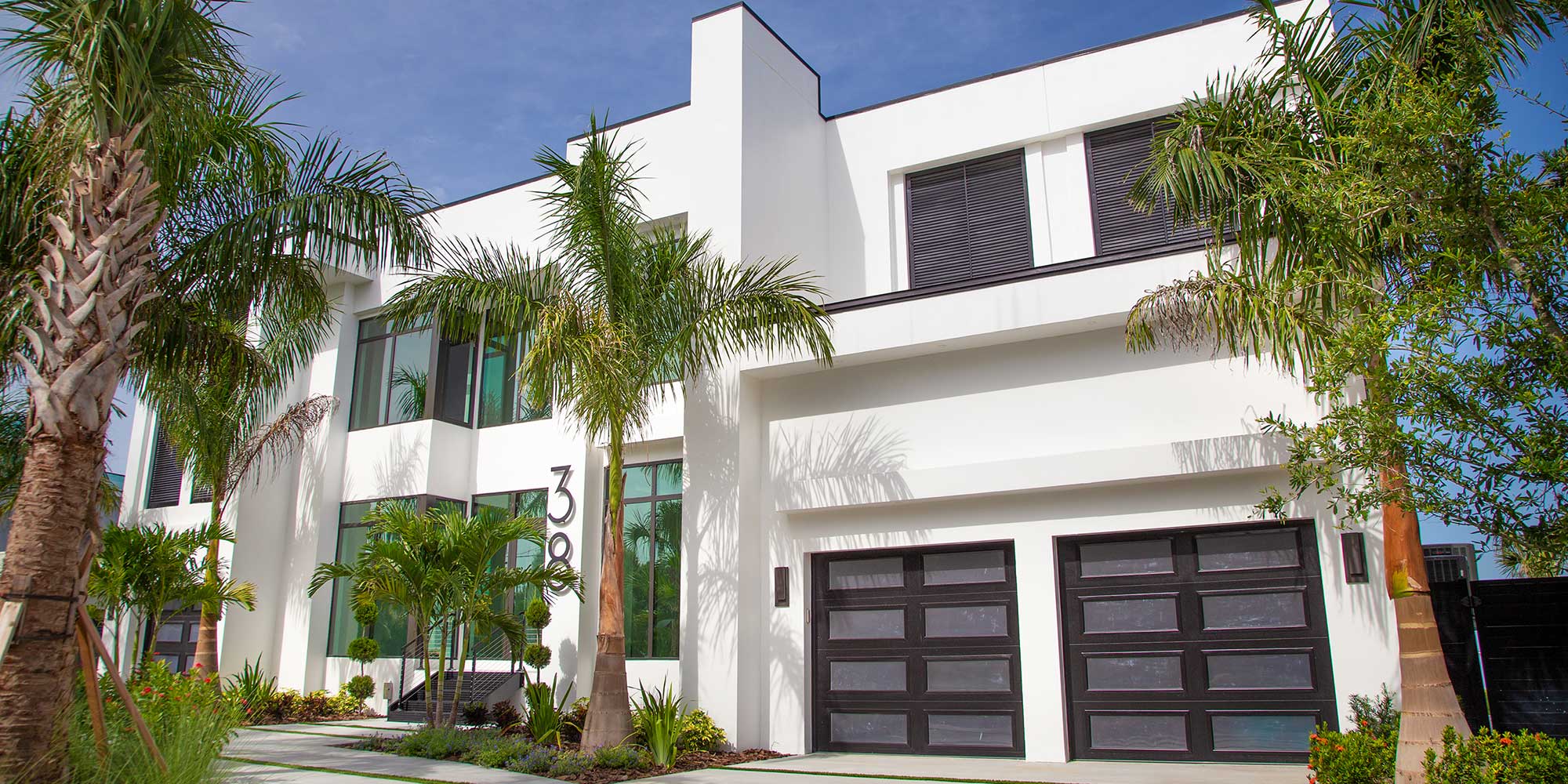For an area not far from celebrating its 100th birthday, Beach Park is as popular as ever. Rhea Shoop and Mary Strong, real estate advisors with Coastal Properties Group, point to the fact that the neighborhood is close to both downtown Tampa and St. Petersburg but maintains a sense of relative seclusion as a major selling point. Beach Park’s variety of classic and more modern architectural styles (plus its opportunities for renovations or totally new construction) appeal to all kinds of tastes — if not necessarily budgets. Read on to learn about six homes that help tell the story of Beach Park.

1. 38 SANDPIPER ROAD
Homes like this are the future of Beach Park, especially along the waterfront. Land is scarce, Strong says, so while some homeowners are remodeling Beach Park’s older homes (or adding on to them, if their lot size allows), many are just starting from scratch. “If the cost to remodel is more than 50% of the home, it’s cheaper to tear down and build new,” Shoop adds. This home, which sold for $6.4 million in April, is indicative of the contemporary, all-white, clean-lined builds replacing the neighborhood’s classic Mediterraneans and ‘50s-style block homes. “Everybody wants to be on the water, and there are large lot sizes [on the waterfront] to build your dream home,” Shoop says of Beach Park. “You know if you buy in Beach Park you’re getting your money out [of it], no matter what. There’s no question. There’s no land left, so the property values just keep going up.

2. 4510 W. SWANN AVENUE
Somewhat common in the late 1920s (when Beach Park was founded) were homes like this one, in the craftsman style. It maintains some elements of the Mediterranean (like the arches at the front of the home) and incorporates craftsman elements like earth tones and a wide front porch under the low-pitched roof. Stroop says owners of these kinds of homes generally update features like the kitchen without fundamentally changing what makes the structures unique. For example, she notes, this home has a rare Florida basement (likely built to store and preserve food in a cool environment) as well as a detached garage and carriage house.

3. 804 AND 806 IDLEWOOD AVENUE
Built on two lots in 1925, this classic Mediterranean features historic live oaks and is one of the neighborhood’s original homes. This was the style of choice for Beach Park developers, who embraced its light colors, stucco construction, and the use of tiles from the roof to the flooring. The design worked well in the pre-air conditioning era. “You can open up all the windows and there’s great circulation,” says Strong, who grew up on Beach Park’s Azeele Street. At five bedrooms and 4,400 square feet, Shoop adds, this home was designed for a wealthier clientele, even back in the 1920s.

4. 4510 W. BEACHWAY DRIVE
This home is an example of an Italian Mediterranean, with cypress trees that pay homage to the gardening styles of the old country. Built in 1926, it was designated as a historic property by the city of Tampa. The house features a front archway common to the Mediterranean style, like the one found at the entrance to the Beach Park neighborhood at the Swann and Lois intersection. Similar arches are also found on the home’s back terrace, which were common in this style of home for al fresco dining (another way to cope before central air).

5. 4416 W. AZEELE STREET
Strong and Roop point to this brand-new home as a marriage of traditional Beach Park architecture with modern design. Strong describes this home as a craftsman (with the lowpitched roof and dormers), but with the farmhouse-style, mostly white look that has been popularized in recent years by HGTV personalities Chip and Joanna Gaines. “This was a little brick ‘50s-style home. The builder came in, kept the foundation, and… just built this gorgeous craftsman on it,” Strong says. Stroop notes that the home’s effective combination of old and new design features makes it blend in with the other homes on the street.

6. 4304 W. AZEELE STREET
One style that Strong saw become popular throughout the 1970s and ‘80s as she grew up in Beach Park was the colonial. “It’s gorgeous,” she says. “Your door is your center feature, and then on either side you have equal sets of windows.” The block of Azeele Street where this home (called the Grand Casa de los Robles, or the Grand House of the Oaks) is located was originally owned by two brothers, who built just two houses on the land. Throughout the ‘70s and ‘80s, the brothers sold off the lots and more homes were constructed, including this one in 1986. Now, just one or two open lots remain throughout all of Beach Park.



